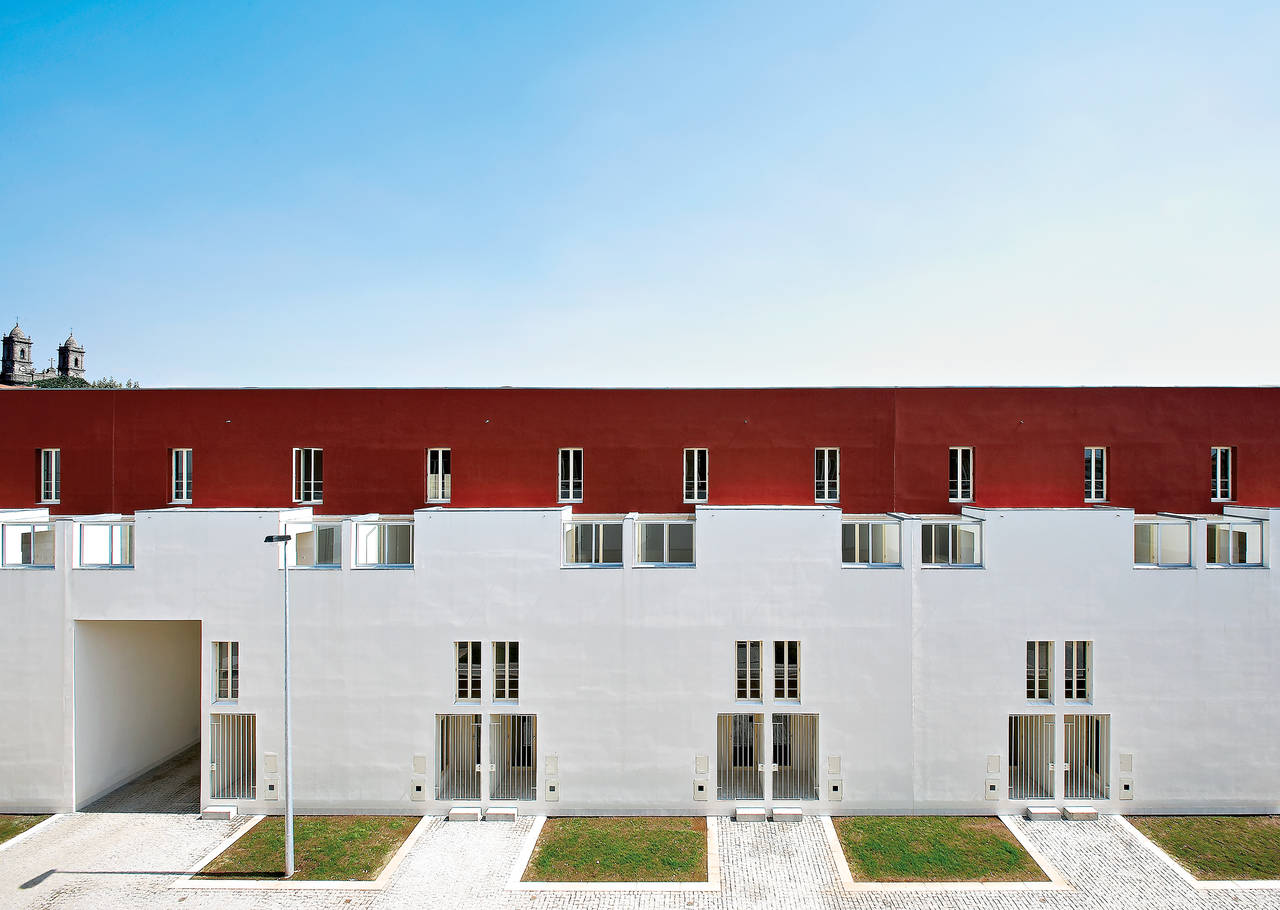architect: Álvaro Siza
location: Porto, Portugal
year: 1975197720052006
The district of Bouca represents the second experiment in building with the participation of the inhabitants, following a specific SAAL program. The first experience had been the residential estate of Sao Victor (1974-79). Bouca comes before the Evora project and, from an architectonic point of view, can be considered one of the most successful post-war projects in council houses. Siza’s project resemblance to Dutch and German council housing programs of the ‘20s can be attributed to the buildings’ contained height and the flats’ proximity resulting in duplex terrace houses. Siza learned a lot from a previous study on Bruno Taut’s architecture in Berlin, duplicating the deep red used by Taut in the upper part of the buildings. He was also greatly influenced by Jacobus Johannes Pieter Oud, from Rotterdam. These modern architecture archetypes are combined with a perfect mustering of elements taken from local architecture, such as the staircases that lead to the flats looking out onto the courtyard. Siza’s art here consists in perceiving what life-styles are at play and reinterpreting them by adding some personalized features.

The main feature of Siza’s estate is a huge enclosing wall and the four sets of buildings resting against it. The wall isolates this area from the noise coming from the busy road above. All the services are by the road, on the furthest side opposite the plot, and form the terraces’ finishing features, acting as heads in the composition. Green courtyards open up between them, on one side. A temporary interruption of the building work in 1977 was for Siza a dramatic event. This was due to a radical change in Portuguese building politics and urban planning, but also due to the residents’ criticism, which put an end to their participation. It was as if all the possibilities the SAAL’s programs had opened up suddenly had vanished for ever. Nobody seemed interested in carrying on with the project, with the exception of Siza himself, who turned out to be the most constant and reliable person. In fact the project was taken up again later and it rapidly came to completion in 2005, after a 28 year gap, without any modifications or help from the residents. Once completed this estate became a significant architectonic example of quality council housing in Porto, registering a high number of visitors and a high housing demand. The residents seem to appreciate its qualities, something that in years gone by the administration hadn’t been able to recognize. The Bouca estate has become a reference point in a city where people often leave the city centre – perhaps a forerunner for future projects, a way to invert the current trend.
F.B.
project: 1975/1976
construction: 1977/1978
client: Associação de Moradores da Bouça
architect: Álvaro Siza
collaborators: António Madureira, Francisco Guedes de Carvalho, Adalberto Dias, Miguel Guedes de Carvalho, Eduardo Souto Moura, Maria Manuela Sambade, Nuno Ribeiro Lopes, José Paulo dos Santos
structures: João Araújo Sobreira
electric system: Jorge Malta
firm: Soares da Costa
project: November 2000 - October 2003
construction: aprile 2004 - aprile 2006
client: Cooperativa Águas Férreas
architects: Álvaro Siza e António Madureira
collaborators: Rosário Borges de Pinho, Raquel Paulino, João Cabeleira, Paulo Sousa, Ana Costa e Silva
structures: João Maria Sobreira (GOP)
hydraulic systems: Raquel Fernandes (GOP)
electric systems: Alexandre Martins, Raul Serafim Costa (GPIC)
mecahanical system: Raul Bessa (GET)
thermal system: Raul Bessa (GET)
firm: FDO
photos: Roberto Collovà, Joao Ferrand
















